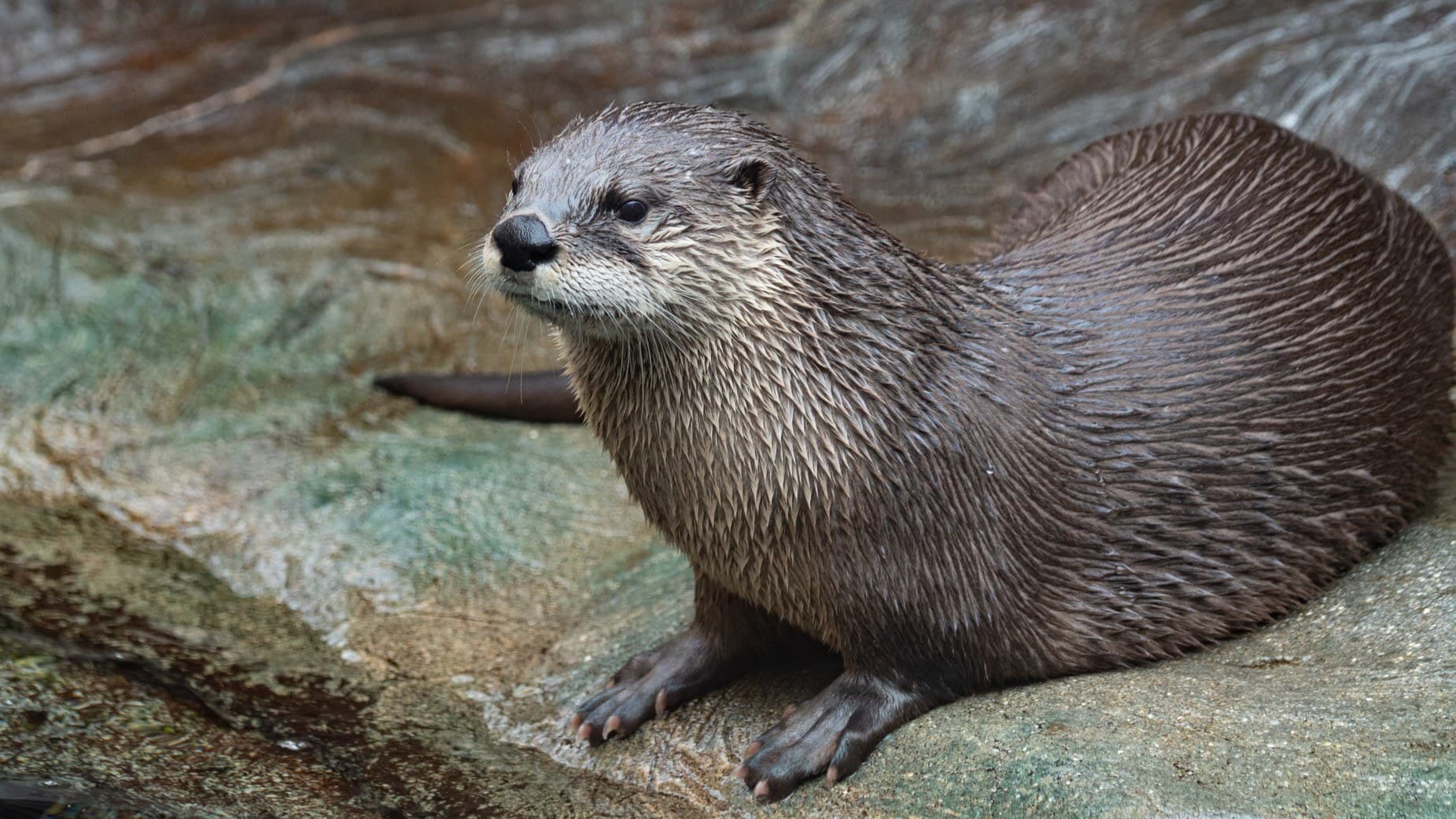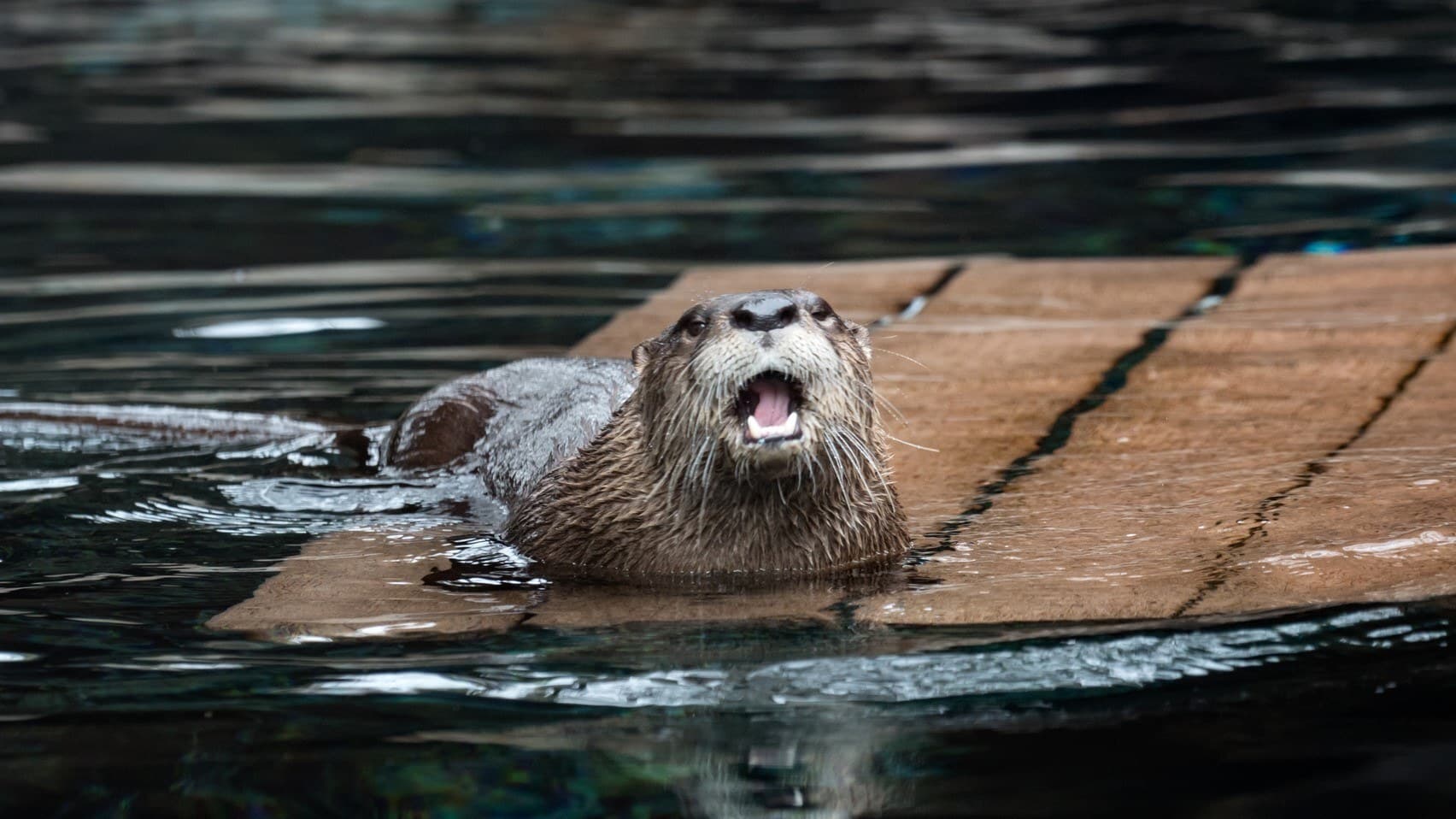Length: From 2 to 5 feet
Weight: Between 10 and 30 pounds
River otters are semi-aquatic acrobats with thick coats that keep them warm while swimming in cold conditions. They have long, narrow bodies that are perfect for gliding, spiraling, and dancing in the water. When swimming slowly, river otters "doggie paddle," using their fore and hind limbs to paddle, while holding their head above water. When underwater, they undulate their body and long powerful tail in coordination with their hind limbs to help propel them. As mammals, they are air-breathers but can stay underwater for up to 8 minutes.
Fun fact: River otters can actually reach speeds faster than an Olympic swimmer!
Diet
River otters enjoy a wide range of foods easily be found at the river’s edge, from fish, crayfish, frogs, and small reptiles to some plants and small mammals like rabbits. They must eat frequently due to their high metabolism and active lifestyles.
Habitat
River otters can thrive in just about any body of water, and build their dens on the water's edge. They are found near lakes, marshes, rivers, estuaries, and ponds. They appear to tolerate cold and warm water habitats alike as long as there is an adequate food supply.
Reproductive Behavior
River otters breed in late winter or early spring and, like all mammals, give birth to live young. Pups, birthed 1-3 at a time, are born helpless and with their eyes closed. They won’t even swim for the first two months, and it is usually their mother who teaches them to swim.
Communication Behavior
River otters can be found living alone or in groups but are very social either way. They use whistles, yelps, barks, and screams to communicate with each other as well as non-verbal behaviors like body posture and touch.
Did you know?
River otters engage in a yet-unexplained “poop dance” before they relieve themselves. Some scientists believe it to be territorial behavior.
Celebrations
In the 19th and 20th centuries, river otters were hunted extensively for their valuable furs and were even extirpated completely from some areas. Fortunately, through active and determined conservation efforts, they are no longer in immediate danger and are categorized as Least Concern on the IUCN Red List.
Concerns
However, as is true for many aquatic animals, habitat destruction and water pollution continue to affect otter populations.



